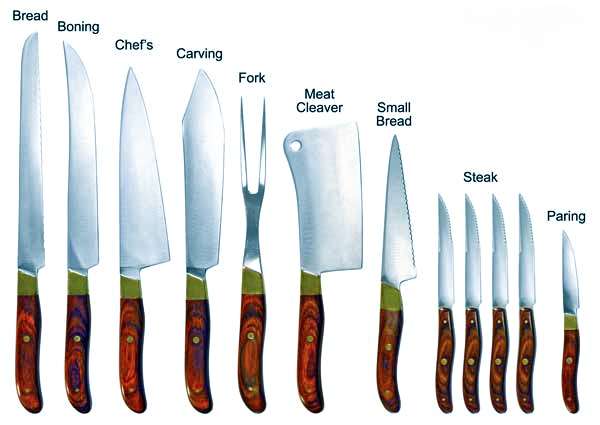If you have aspirations of preparing meals like your favourite French chef, then you will need to equip yourself with chef knives. To learn more about the various chef knives read our guide for more facts and information…
Professional knives are usually made in one of two methods. They are either stamped or hot-forged.
Hot-Forged Knives
Hot-forged knives are made in a multi-step process that is quite expensive. These are made usually by hand, and not by machines. Here steel is heated to an extremely high temperature and then forged into the required shape. Once the shape has been made the knife is then sharpened.
One of the biggest benefits of these kinds of knives is that they are frequently full tang. This means that the blade handle extends through the plastic or wooden handle, making it much safer to use because there is a reduced chance of it breaking.
Stamped Knives
Here, no heat is applied to the steel in order to create the shape. It is later heat treated in order to reinforce its strength.
Chef Knife Metals
These knives are most commonly made from steel, be it stainless steel or carbon steel, or even a combination the two. These knives can also be made from ceramic.
Carbon steel chef knives are popular because they are easier to sharpen and remain sharper for a long period of time. However, the negatives of these knives are that they rust easily and are also more easily stained. But, French chefs love these because with their sharpness they make the work much easier. But, they do require a lot of care and maintenance, so they are not favourites with professional French chefs who work in busy kitchens.
Stainless steel is significantly less maintenance intensive than carbon steel. And, it is possible to find sharp stainless steel knives (especially from Japanese knife makers).
Then there are the laminated professional chefs knives which are loved by French chefs. These are a composition of both carbon steel and stainless steel in order to have the best of both worlds.
Ceramic knives are good because they are sharp. However, these chip easily and can be broken if dropped.
Cut like a French Chef
The way in which the knife is gripped during use is determined by what is being cut and the shape required. For example, modern French cuisine is known for its delicacy and excellent presentation. When finely slicing ingredients the handle is moved up and down but the tip of the knife remains in constant contact with the cutting board.
When wanting to prepare ingredients for fine French cuisine at the level of the professional French chefs the knives used are very important as presentation is as central to the food as are the flavours. Foodies and amateur chefs should invest in the very best professional knives, with the material of the knife depending on the personal requirements of the cook. It is also beneficial to collect different professional knives that are made for different cutting purposes in the kitchen.





